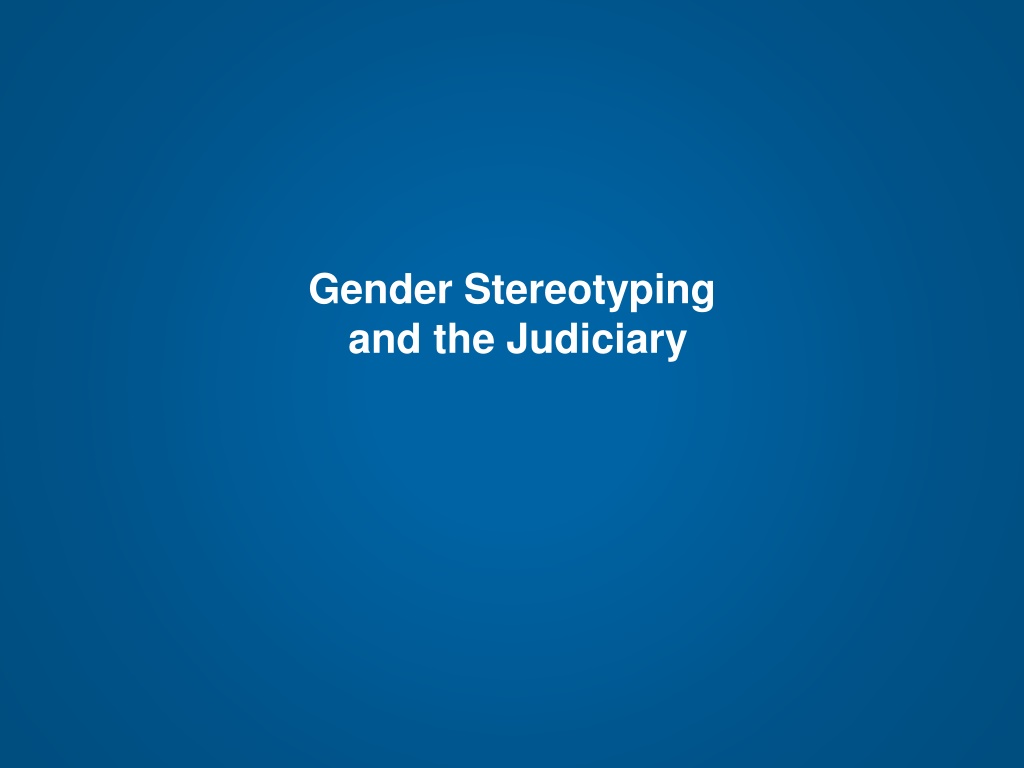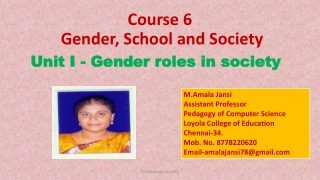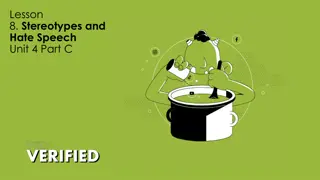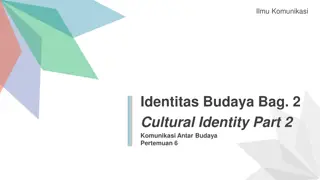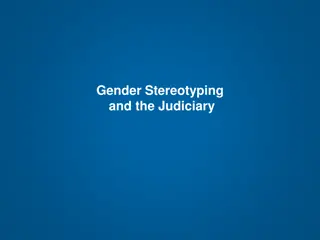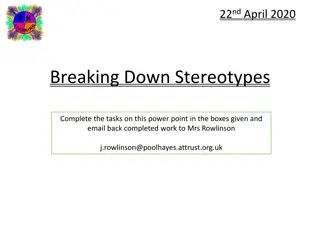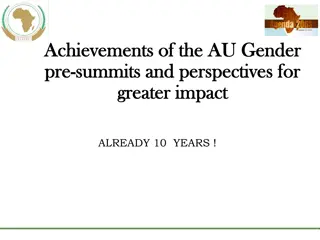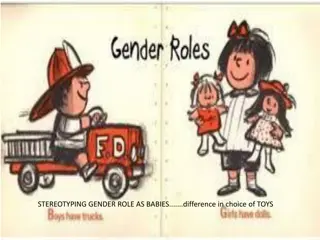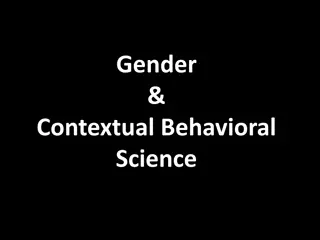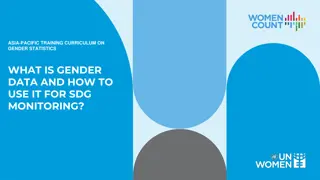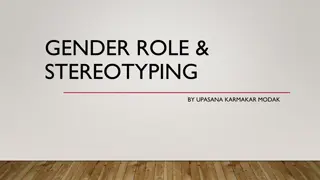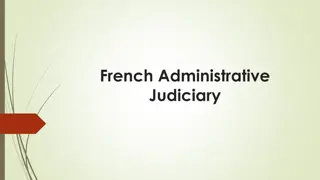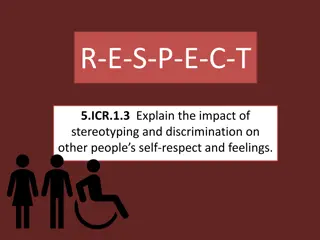Understanding Gender Stereotyping and its Impact on the Judiciary
Gender stereotyping, both in the form of beliefs and practices, permeates society and can have detrimental effects, particularly within the judicial system. This pervasive issue extends beyond generalized views about men and women, affecting individuals' identities and intersecting with other stereotypes like age, ethnicity, and disability. Recognizing and challenging gender stereotypes is essential to promoting equality and justice.
Download Presentation

Please find below an Image/Link to download the presentation.
The content on the website is provided AS IS for your information and personal use only. It may not be sold, licensed, or shared on other websites without obtaining consent from the author. Download presentation by click this link. If you encounter any issues during the download, it is possible that the publisher has removed the file from their server.
E N D
Presentation Transcript
Gender Stereotyping and the Judiciary
Session 3. Gender stereotyping 1. Concept of stereotypes and wrongful gender stereotyping 2. Gender stereotyping as a human rights violation 3. How wrongful gender stereotyping occurs in the Judiciary
Gender stereotypes A gender stereotype is a generalized view or preconception about attributes or characteristics that are or ought to be possessed by, or the roles that are or should be performed by, men and women It s a BELIEF
Gender stereotyping In contrast gender stereotyping refers to the practice of ascribing to an individual woman or man specific attributes, characteristics, or roles by reason only of her or his membership in the social group of women or men It s a PRACTICE
Gender stereotypes and gender stereotyping Generalized view or preconception about sex or gender STEREOTYPE (belief) Assumptions about attributes, characteristics & roles of women/men STEREOTYPING (practice) Inferences about individual women and men
Gender stereotyping is pervasive in society Women should not be stereotyped as a homogeneous group Gender stereotyping can also undermine other forms of gender identity Beyond gender stereotypes, there are many other stereotypes related to age, ethnicity, disability (intersectionality).
Gender stereotyping Gender stereotypes (and, hence, gender stereotyping) come in varied and overlapping forms: sex sexual stereotypes stereotypes sex-role stereotypes compounded stereotypes
Sex stereotypes The term sex stereotype refers to a generalized view or preconception about the physical, including biological, emotional and cognitive, attributes or characteristics that are or should be possessed by women and men.
Examples of sex stereotypes Women are weak Women are empathetic Men are competitive Sex stereotypes Women are passive Men are aggressive
Sexual stereotypes The term sexual stereotyperefers to a generalized view or preconception about the sexual characteristics or behaviors that women and men are believed or expected to possess.
Examples of sexual stereotypes Women are sexually passive Older men lack sexual prowess Men have strong libidos Sexual stereotypes Men are promiscuous Women should be chaste
Sex-role stereotypes The term sex-role stereotyperefers to a generalized view or preconception about the roles that women and men do or are expected to perform, and the types of behaviors that they possess or to which they are expected to conform.
Examples of sex-role stereotypes Women are caregivers Men are decision- makers Men are heads of households Sex -role stereotypes Women are homemakers Men are breadwinners
Compounded stereotypes The term compounded stereotype refers to a generalized view or preconception about groups that result from the ascription of attributes, characteristics or roles based on one or more other traits, for example sex/gender and disability.
Examples of compounded stereotypes Older women are warm Rural women are uneducated Compounded stereotypes Asian women are submissive Women with a disability are asexual
Gender stereotyping and human rights International human rights law is concerned with stereotypes and stereotyping that affect recognized human rights. CEDAW Committee has explained that States Parties have legal obligations to modify or transform harmful gender stereotypes and eliminate wrongfulgender stereotyping.
Harmful gender stereotypes A generalized view or preconception about attributes, characteristics or roles about women and men, which, limits their ability to pursue their professional careers and make choices about their lives and life plans. Wrongful gender stereotyping The practice of ascribing to an individual woman or man specific attributes, characteristics or roles, which results in violation of human rights and fundamental freedoms.
States international legal obligations CEDAW Article 5 States to take all appropriate measures to modify the social and cultural patterns of conduct of men and women in an effort to eliminate practices that are based on the idea of the inferiority or the superiority of either of the sexes or on stereotyped roles for men and women. Article 2(f) - reinforces article 5 by requiring States to take all appropriate measures to modify or abolish laws, regulations, customs and practices which constitute discrimination against women. Article 10(c) - States to take all appropriate measures to ensure the elimination of any stereotyped concept of the roles of men and women at all levels and in all forms of education by encouraging education which will help to achieve this aim and, in particular, by the revision of textbooks and school programs and the adaptation of teaching methods.
Other human rights standards The CRPD is the first international human rights treaty to impose an express obligation to address compounded stereotypes. Many international human rights treaty bodies have recognised that the rights to non-discrimination and equality contain an implied obligation to address stereotypes/ stereotyping. As the obligations to address stereotypes/stereotyping are crosscutting, they should be read together with all substantive rights & freedoms as well as in their own right. Consensus amongst UN human rights mandates that differences in treatment that are based on gender stereotypes (or, indeed, other types of stereotypes) may constitute discrimination against women, absent objective and reasonable justification.
Harms of wrongful gender stereotyping Wrongful gender stereotyping undermines particularly, the rights to: Non discrimination and equality Health, including sexual & reproductive health Education Adequate standard of living Participation in political and public life Equality in marriage and family relations Right to be free from violence, including gender-based violence.
Gender stereotyping in the Judiciary The term judicial stereotyping is to refer to the practice of judges ascribing to an individual specific attributes, characteristics or roles by reason only of her or his membership in a particular social group (e.g. women). It is used, also, to refer to the practice of judges perpetuating harmful stereotypes by not challenging stereotyping, for example by lower courts or parties to legal proceedings.
Gender stereotyping in the Judiciary Cases from national, regional and international courts and human rights mechanisms reveal that sometimes judges engage in wrongful gender stereotyping by: issuing decisions based on their own preconceived beliefs, rather than relevant facts, misinterpreting or misapplying laws, adopting rigid standards about what they perceive as appropriate behavior, penalizing individuals who do not conform to their stereotypes.
International legal obligations of the judiciary Judiciary have three core obligations: Refrain from stereotyping (obligation to respect) Ensure stereotyping does not infringe human rights (obligation to protect) Ensure persons can exercise and enjoy the right to be free from wrongful gender stereotyping (obligation to fulfill)
Why is judicial stereotyping important A common and potent barrier to women s access to justice Undermines the impartiality and integrity of the justice system Can result in miscarriages of justice and re-victimization Women victims and survivors should be able to rely on a [justice] system free from myths and stereotypes, and on a judiciary whose impartiality is not compromised by biased assumptions. Eliminating judicial stereotyping is therefore a crucial step in ensuring equality and justice for victims and survivors.
The positive role of the Judiciary in addressing gender stereotyping Judiciaries can and do play a critical role in addressing the structural causes of human rights violations by: - Explicitly identifying and addressing harmful gender stereotypes and wrongful gender stereotyping in their cases and decisions; - ensuring that legislation, norms and practices conform to human rights and constitutional guarantees.
